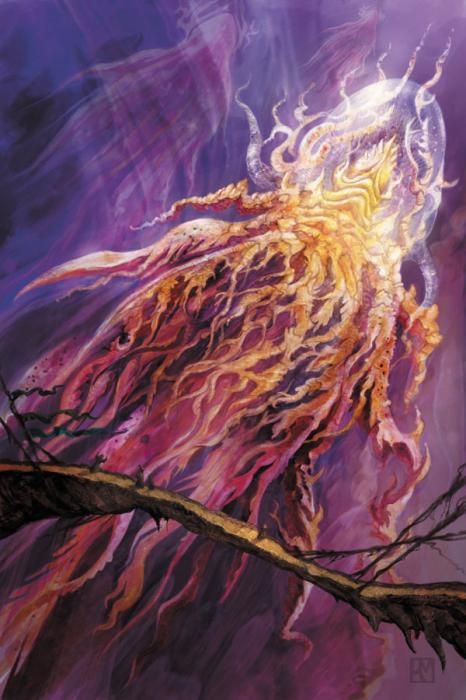"Prophet" #30 continues Brandon Graham, Giannis Milonogiannis and Simon Roy's winding, epic science fiction story that borrows characters from Rob Liefeld's original "Prophet," while being a different kind of story in almost every other respect.
Looking at just its plot, "Prophet" #30 has, for once, a trajectory more like a mainstream comic. It opens with Rein-east's infiltration into the "Swimming Palace" with the suspense of a focused, straight-up act of war, and John Prophet's direct confrontation with Jinnah near the end of the issue almost reads like a regular superhero comic, with more dialogue than typical for "Prophet," and an ending panel that has a classic team-up composition and camera angle.
Although the sense of immediacy increases in "Prophet" #30, Graham sticks to text box voiceover for explanations and characters' thoughts. John Prophet's elegiac reflection on his old love Yilala is sandwiched between all the action, and the flashback has Graham's usual backward looking, imaginative scale and expansive tone.
"Prophet" #30 begins in third-person, with Rein-east's narration, then switches to Die-hard and Brother Hiyonhoiagn's points of view briefly, before settling on the usual focus of John Prophet. Then, at the end, it weirdly switches again, this time to Jaxson's first-person point of view. The shift in voice is fine, but the switch in point of view is unexpected and jarring. Graham, Milonogiannis and Roy are so deliberate, and point of view is such an important choice, that this can't be an accident. However, I can't guess at why. Thus, "Prophet" #30 is paradoxically more disjointed yet also more straightforward in narrative than usual.
Graham, Milonogiannis, and Roy's world-building also continues to be wonderfully, alarmingly rapid and dense, with stone decoders for deadly plants and "carnivorous bladder traps" being my favorite inventions in this issue, both casually introduced as background detail.
At the end of the issue, there's a discernable shift from Milonogiannis' pencils to Graham's, then back again to Milonogiannis for the last panel. The change is visually disruptive, but at least it occurs in tandem with a change of location and the shift from third-person to first-person.
Milonogiannis' opening double-page spread of the Jinnah's swimming palace is bizarre and intricate, defining mood and space quickly. Also, his grittier, cross-hatching-heavy line has been a great match for "Prophet," but it's a pleasure to briefly see Graham's cleaner compositions and his curvier, more whimsical line.
The coloring by Bergin, Milonogiannis and Graham in "Prophet" #30 matches action to hue intensity, with vivid accent colors for the fight scenes, and gray, green and orange monotones for the flashback sequence. A panel of apple-bright red early in the issue emphasizes Rein-east's anger and danger, and the red recurs for the first glimpse of a new antagonist.
Over the whole of "Prophet" #30, however, the coloring lacks continuity as it changes dramatically for Graham's seven panels near the end of the issue. My guess is that Graham colored his own pencils. If so, Graham's ease with a palette of beautiful warm neutrals makes a good case that he is the best choice to color his own work, even if it aggravates the shift in art style.
Pointing out these bumps of narrative and artistic discontinuities is mostly just nitpicking, though, because the storytelling and art in "Prophet" #30 are still a league above average.
In its ambition and scale, poetic prose, world-building and unpredictable action, imagery and imagination, "Prophet" is one the best, strangest comic books on the market. I'd recommend it to friends who might appreciate its unusual storytelling and mind-bending landscapes, or to readers who are looking for something different and new.

